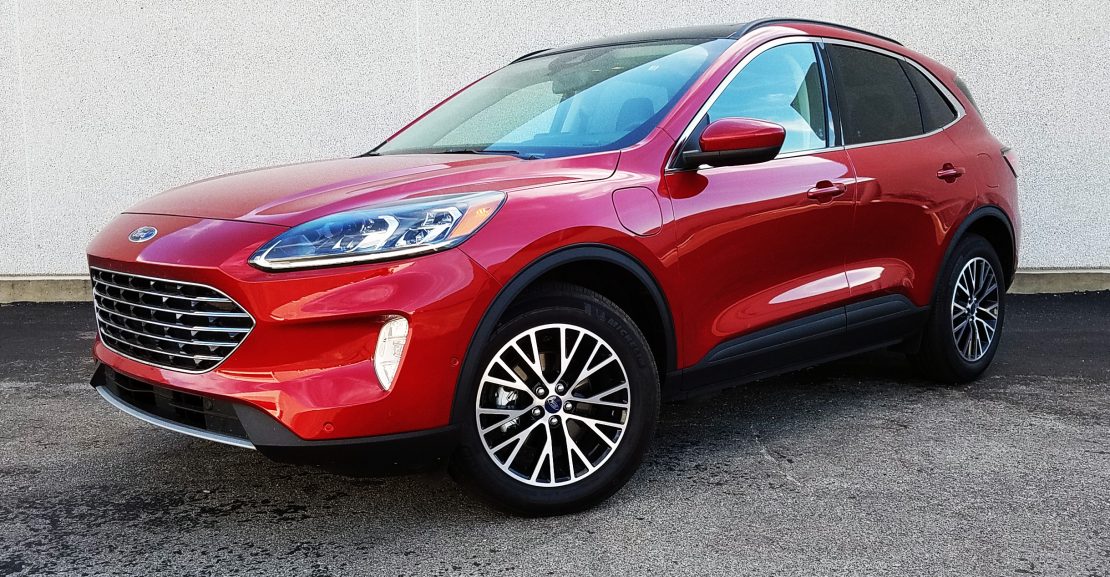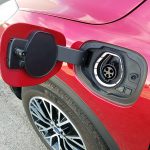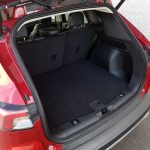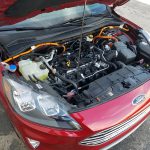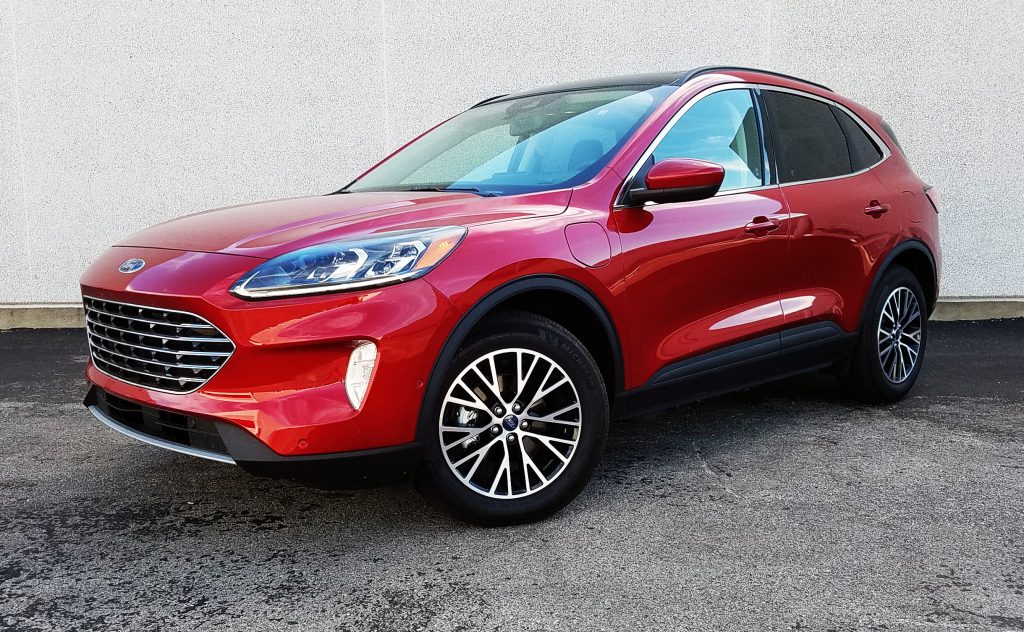
 2022 Ford Escape Titanium PHEV
2022 Ford Escape Titanium PHEV
Class: Compact Crossover
Miles driven: 445
Fuel used: 9.2 gallons
Real-world fuel economy: 48.3 mpg
Driving mix: 30% city, 70% highway
| CG Report Card | |
|---|---|
| Room and Comfort | B- |
| Power and Performance | B- |
| Fit and Finish | B |
| Fuel Economy | A |
| Value | B |
| Report-card grades are derived from a consensus of test-driver evaluations. All grades are versus other vehicles in the same class. Value grade is for specific trim level evaluated, and may not reflect Consumer Guide's impressions of the entire model lineup. | |
| Big & Tall Comfort | |
| Big Guy | A- |
| Tall Guy | A- |
| Big & Tall comfort ratings are for front seats only. "Big" rating based on male tester weighing approximately 350 pounds, "Tall" rating based on 6'6"-tall male tester. | |
| Drivetrain | |
| Engine Specs | 221-hp 2.5L |
| Engine Type | 4-cyl/electric |
| Transmission | CVT |
| Drive Wheels | FWD |
EPA-estimated fuel economy: 105 MPGe/40 mpg (city/highway combined)
Fuel type: Regular gas
Base price: $40,700 (not including $1495 destination charge)
Options on test vehicle: Rapid Red Metallic tinted clearcoat paint ($495), Titanium Premium Package ($2075), panoramic sunroof ($1595)
Price as tested: $46,360
Quick Hits
The great: Excellent fuel economy is further enhanced by generous pure-electric driving range; good occupant space within compact exterior dimensions
The good: Car-like styling and handling; comfortable ride
The not so good: Not as much cargo-carrying capacity as many class rivals; steep price premium for plug-in-hybrid powertrain; all-wheel drive isn’t offered on PHEV; some so-so interior materials work against upscale aspirations of Titanium trim level
More Escape price and availability information
John Biel
Ford pulled the plug on hybrid-powered Escape compact SUVs in the generation prior to the current one that arrived for 2020. Said plug has been reinserted—quite literally with a plug-in version that’s being carried over for 2022.
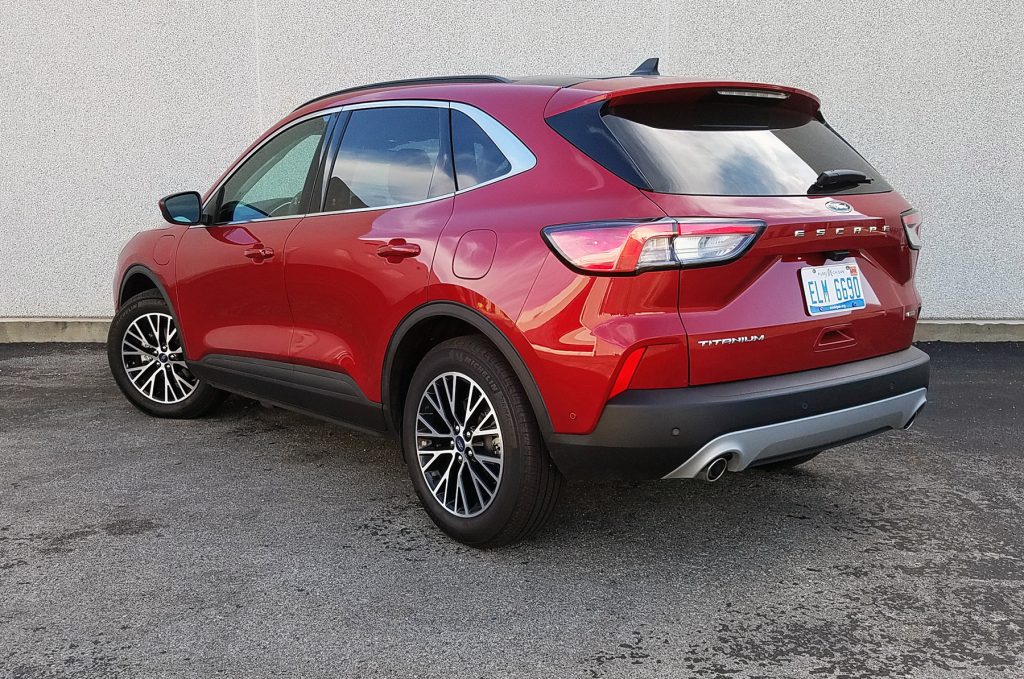
A basic gas-electric hybrid was revived with Escape’s ’20 redesign; indeed, Consumer Guide tested one back then. Come 2021, it was accompanied by a plug-in version available in three trim grades, a lineup that continues effectively unchanged in 2022 except for three new shades of blue paint—and the inevitable price increases.
The power source for the plug-in hybrid is a 2.5-liter Atkinson-cycle 4-cylinder engine—rated at 165 horsepower at 6250 rpm—paired with an electric motor for total system output of 221 horsepower. The transmission (used in both Escape hybrid types) is an electronically controlled continuously variable automatic. Note that the plug-ins are the only Escapes without a choice of driveline—they are restricted to front-wheel drive.
Best Mileage: 2022 Consumer Guide Fuel-Economy Champions (No Plug-ins)
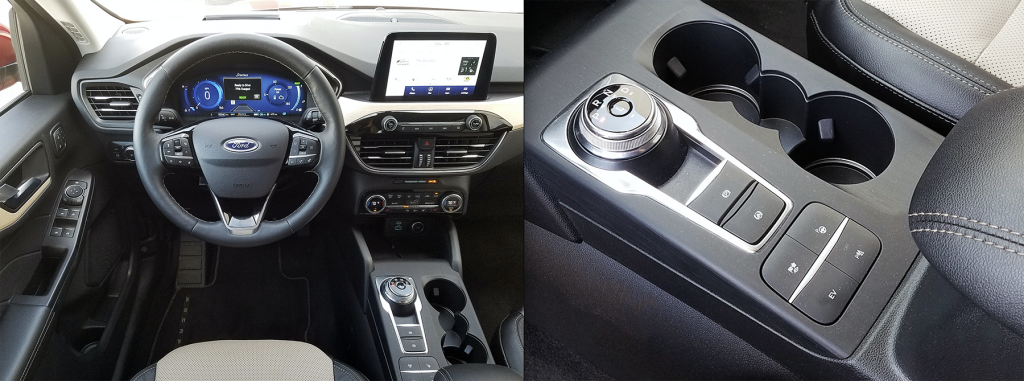
When fully charged, the plug-in is capable, the EPA projects, of going 37 miles on nothing but electrical energy. Indeed, the first CG editor to take the keys to the top-trim Titanium model provided for this test got exactly that. (Potential EV range may be somewhat elastic, however. After one of our recharges to 100-percent capacity on a seasonably warm early summer day the vehicle indicated a possible range of 44 miles.)
A button on the console lets drivers choose how to wield the power granted to them. In addition to the expected modes of conventional hybrid (with automatic utilization of gas or electric power according to need) and all-EV operation it’s also possible to choose a mode that will conserve battery power for later EV driving or one that replenishes battery charge through regenerative capture while driving. When behaving like a “normal” hybrid the plug-in Escape is lively enough for safe highway driving and shifts subtly between electric and internal-combustion power. Performance is a little more muted when running solely on electricity, which is less of a problem for in-town driving than it is on the open road.
Local Color: Unusual Paint Hues at the 2022 Chicago Auto Show
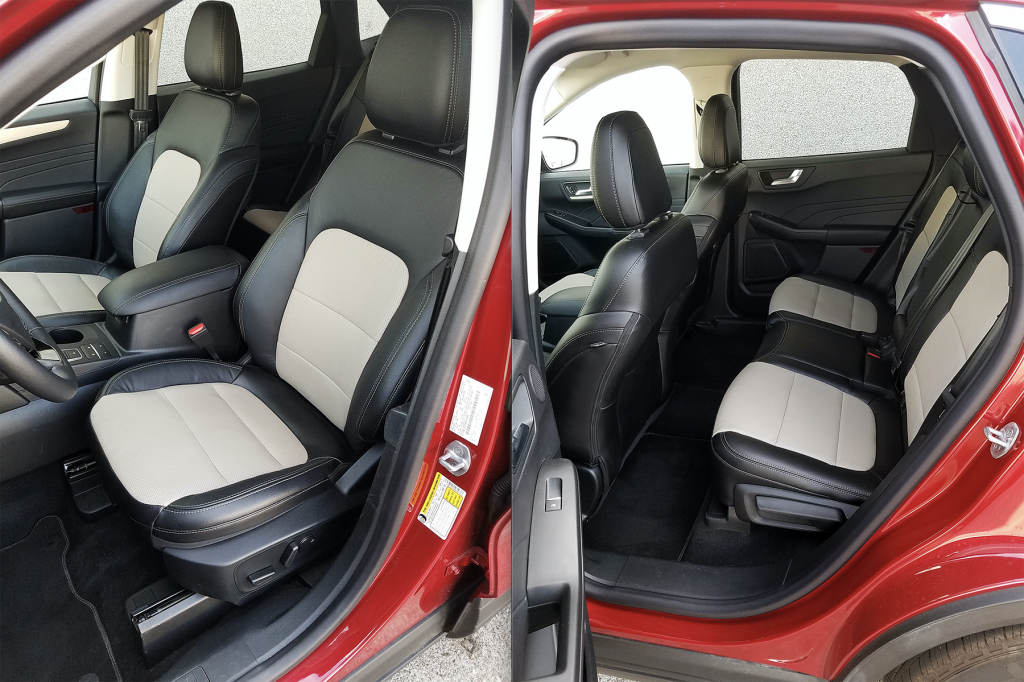
EPA city/highway-combined ratings for the Escape plug-in are 105 MPGe overall and 40 mpg for its gas use. One of our testers who put more than 350 miles on the Escape—just 25 percent of which was in city driving—recorded 40.8 mpg. The vehicle is equipped with a 110- and 240-volt charge adapter (sorry, no “fast-charge” hookup) that can bring it from nearly spent to fully charged in 10 to 11 hours at 110 or 3.5 to 4.5 hours at 240. Its 11.1-gallon gas tank is smaller than what’s in other Escapes.
Test Drive: 2021 Lincoln Corsair Grand Touring
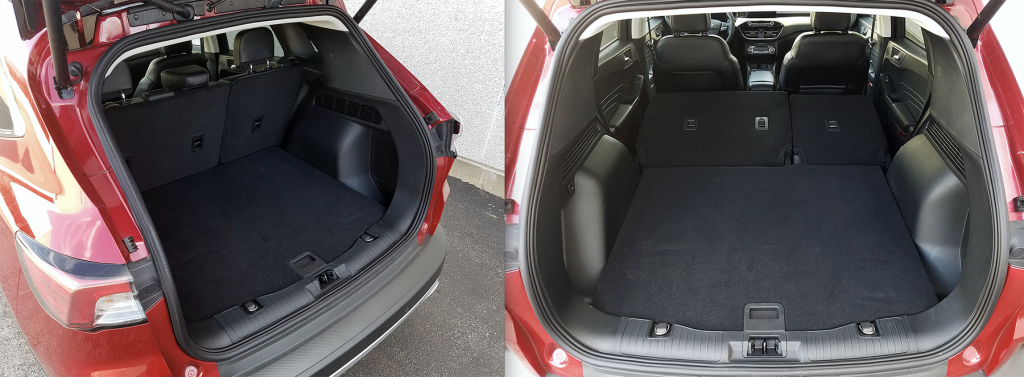
Regardless of powertrain, any Escape can claim good small-SUV leg- and headroom throughout. The sliding 60/40 rear seat (with reclining backs) allows for maximizing legroom or load space as required—and cargo capacity is only average for the class. For bigger loads, the rear seats fold flush with the cargo floor, albeit at a slight rise. The premium-grade test vehicle was dressed up with attractive Ebony-and-Sandstone leather seats, heated in front with a 10-way power-adjustable driver’s seat. Still, while the front row had lots of soft, padded areas on dash and doors, the top and center of rear doors came in textured hard plastic.
Vacation Test Drive: 2022 Hyundai Tucson Limited Hybrid
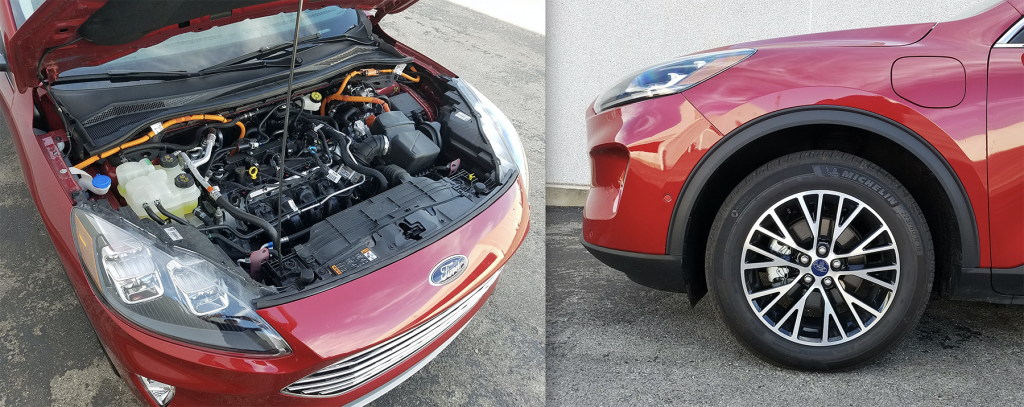
Ride was generally pleasing on the high-sidewall 225/60R18 all-season tires, but certain pavement surfaces induce hard-to-ignore noise despite Ford’s efforts for sonic serenity. Other notable standard equipment included a 12.3-inch digital instrument cluster; SYNC 3 infotainment system with 8-inch touchscreen and Apple CarPlay/Android Auto compatibility; satellite radio; FordPass Connect with a 4G LTE Wi-Fi hotspot; dual-zone automatic climate control; heated, leather-wrapped tilt/telescoping steering wheel; heated exterior mirrors; hands-free liftgate; remote starting; adaptive cruise control; and voice-activated navigation. Driver aids were bundled into the Ford Co-Pilot360 safety suite of forward-collision warning, automatic emergency braking, pedestrian detection, blind-spot monitor with rear cross-traffic alert, lane-keep assist, post-collision braking, and automatic high-beam headlamps.
In addition to the Titanium, the Escape plug-in can be had in SEL or SE trims, which help make the stiff price premium for the plug-in-hybrid powertrain a little less foreboding (if, of course, you’re willing to give up a few comfort and convenience features). If the Titanium’s $42,140 starting price with destination is too steep, you can choose the SEL ($39,685 to start) or the SE ($36,950 to start).
Test Drive Gallery: 2022 Toyota RAV4 Hybrid Limited
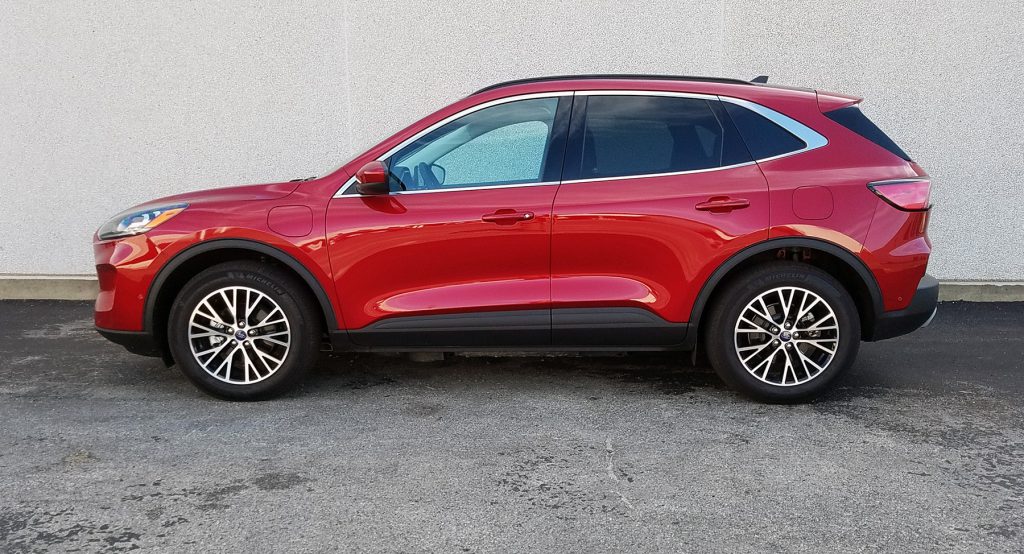
2022 Ford Escape Titanium PHEV Gallery
Click below for enlarged images
2022 Ford Escape Titanium PHEV
2022 Ford Escape Titanium PHEV

